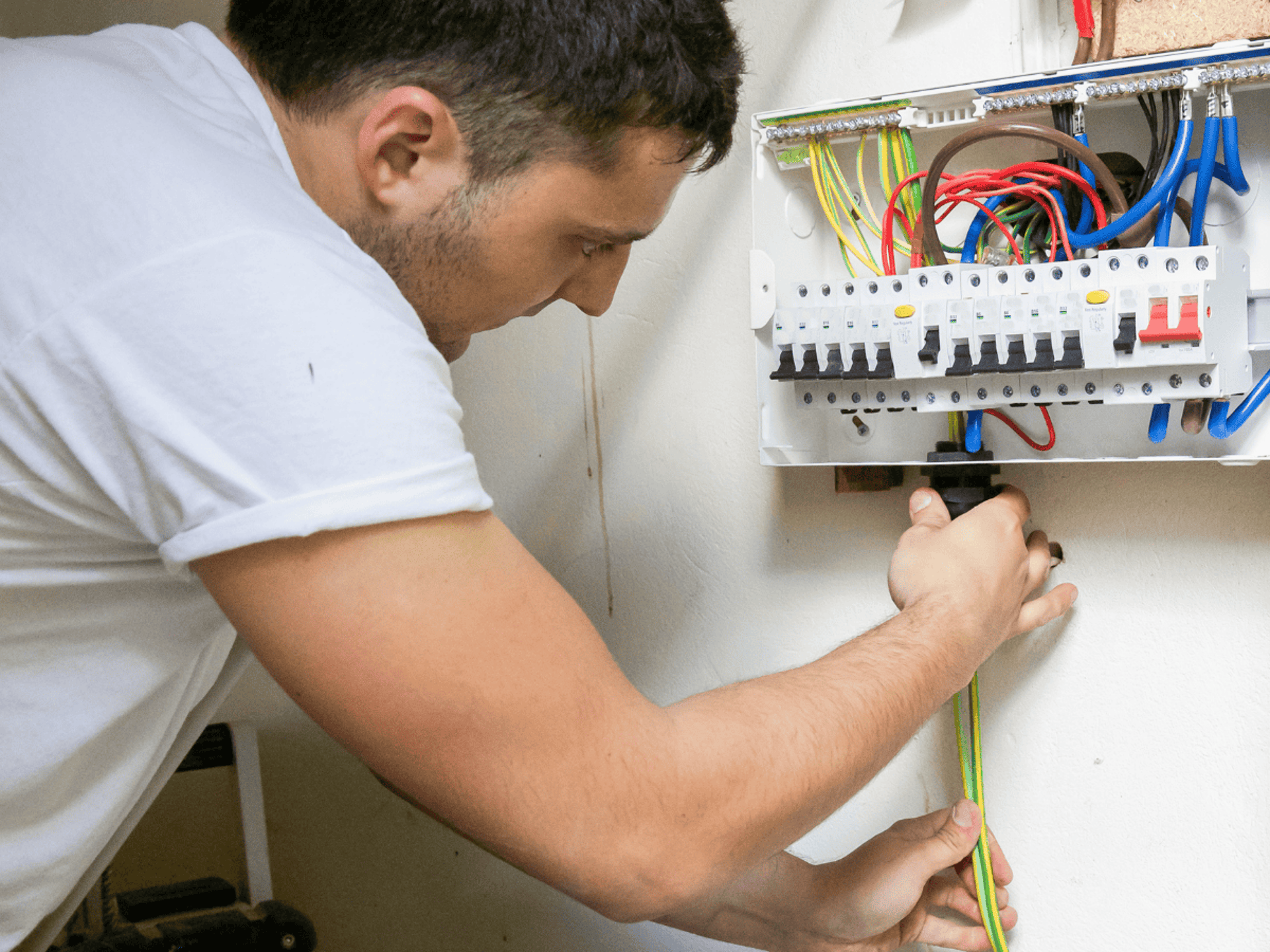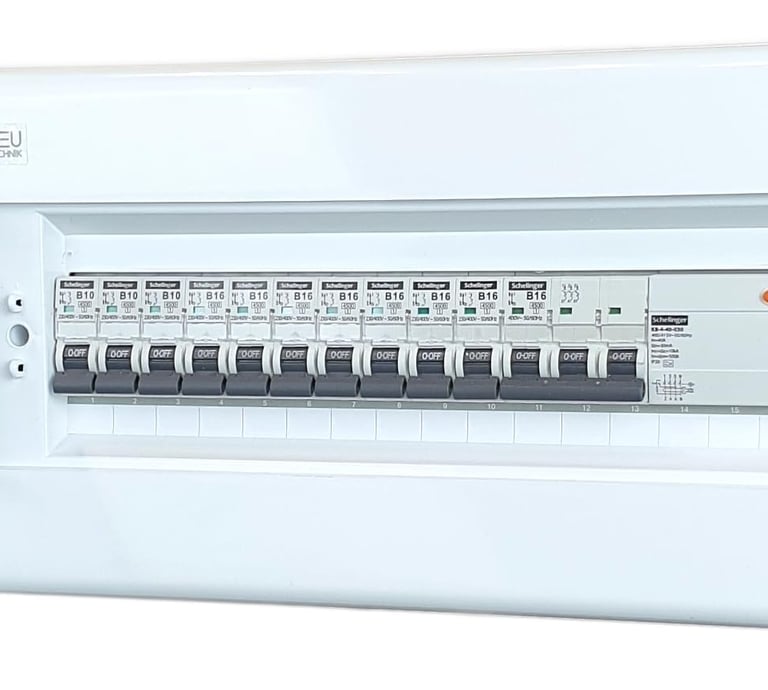
Consumer Units of Fuse box
Essential insights on domestic consumer units, common issues, and compliance in the UK.
What Is a Consumer Unit?
A consumer unit is the modern version of the old "fusebox" in UK homes. It’s the small box of switches in your house that keeps the electricity running safely. Every circuit (lights, sockets, kitchen, etc.) has its own switch—usually a Miniature Circuit Breaker (MCB)—and in modern units, you’ll also find Residual-Current Devices (RCDs) that protect against electric shocks and fire risk.
We charge approximately £600 to replace with the latest fuse box 12 way with RCBO.
📞 07449 303889
📧 nordsyslimited@gmail.com


Consumer Unit FAQs
Common Problems & How to Solve Them
Tripping RCDs or breakers
Problem: Power cuts out when using certain appliances or all at once.
Solution: Could be a faulty appliance (like a kettle or heater); unplugably isolate it. If the unit itself is old, upgrading to RCBOs (combined RCD and MCB) may help prevent nuisance trips
Burning smell, smoke, hot surface
Problem: Dangerous signs of overheating or electrical fire.
Solution: Switch off the consumer unit immediately and call a registered electrician. Overheated meter tails or poor connections can pose a serious risk
Outdated equipment
Problem: Old-style fuseboxes or units with rewirable fuses lack modern safety features.
Solution: Upgrade to a modern consumer unit with RCD or RCBO protection. Even though old units may still be legal, they often won’t meet current safety standards
Loose or exposed wires
Problem: Wires not properly supported or sheathed, increasing fire risk.
Solution: Ensure cables, including meter tails, are fully supported and protected (e.g., with grommets). No bare bits should be visible
Bad placement or poor access
Problem: Unit is hard to reach or tucked away in a damp spot.
Solution: Fit the unit between 0.45 m and 1.2 m above the floor, in a dry, well‑ventilated, and easily accessible place
UK Legislation & Standards
BS 7671 – IET Wiring Regulations, 18th Edition (Amendment 3, 2024)
The most up-to-date wiring rules in the UK, known as the "regs", reference best safety practices. While they are not laws by themselves, they are treated as the standard to comply with legal requirements like Building Regulations
Important features include:
RCD protection on most circuits and non-armoured cables in walls.
Arc Fault Detection Devices (AFDDs) required on final circuits ≤ 32 A Wikipedia+2Wikipedia+2Skills Training Group+1.
Consumer units must be made from, or housed in, non-combustible material since 1 January 2016
Part P of the Building Regulations (England & Wales)
Electrical work in homes must be safe and compliant.
Replacing a consumer unit is notifiable work, meaning it must be registered with building control unless done by a registered (Competent Person Scheme) electrician
Building Regulations 2010 & Building Safety Act 2022
Set the legal basis for domestic electrical safety standards. Part P specifically applies to domestic dwellings and is updated periodically; the current version has been in effect since April 2013.
Electrical Installation Condition Report (EICR)
Required whenever you replace a consumer unit (and for landlord obligations). This report confirms the safety and standard of the electrical installation
Points to Watch Out For
Material of the unit: Must be non-combustible (e.g., steel) or housed in a non-combustible cabinet
Cable support & protection: No exposed cores; meter tails and flexes need proper support and stress relief
RCD coverage: Ensure all relevant circuits, particularly sockets and buried cables, are protected by a 30 mA RCD or RCBO
AFDD inclusion: Consider Arc Fault Detection Devices on final circuits, especially those ≤ 32 A
Accessibility & placement: Must be installed at correct height (0.45–1.2 m), not cluttered, not in damp areas, and not behind a staircase escape route without C3 rating
Using proper installers: Only a registered electrician under a Competent Person Scheme should carry out notifiable work — or notify building control
Up-to-date inspection: Always get an EICR after replacing or altering a consumer unit
Sandwich Electrical
Your trusted local electrician in Sandwich, Kent. 100% Satisfaction guarantee. 10 year warranty against faulty workmanship.
Use the Chat button on the bottom right to check prices, review our policies and arrange an appointment
Call Richard the Electrician on 07449303889
© 2025. All rights reserved.


